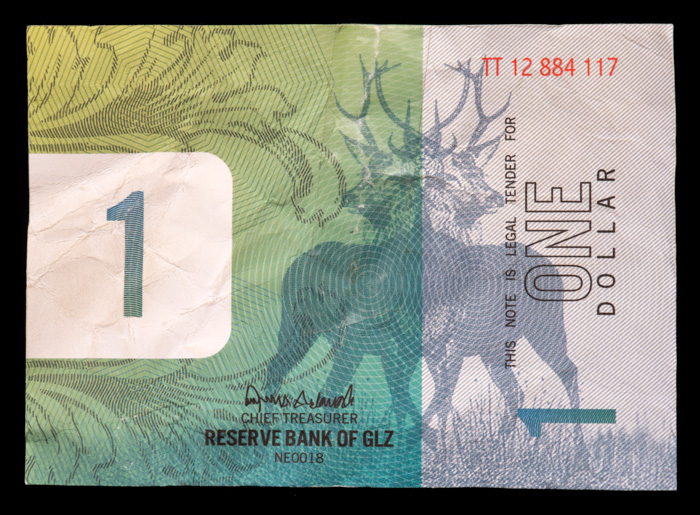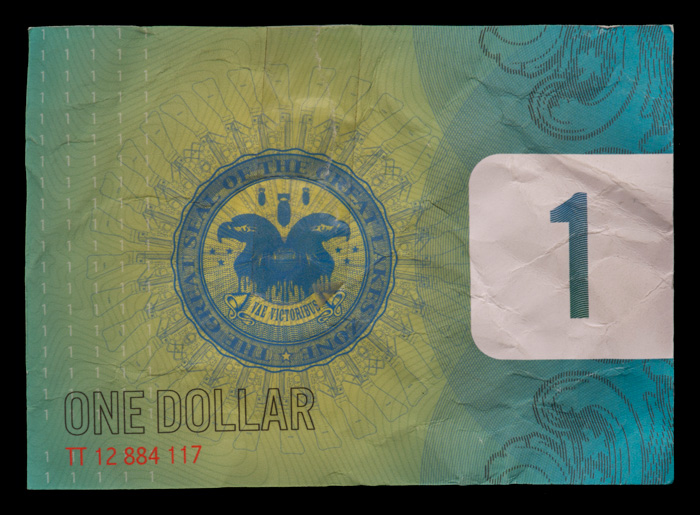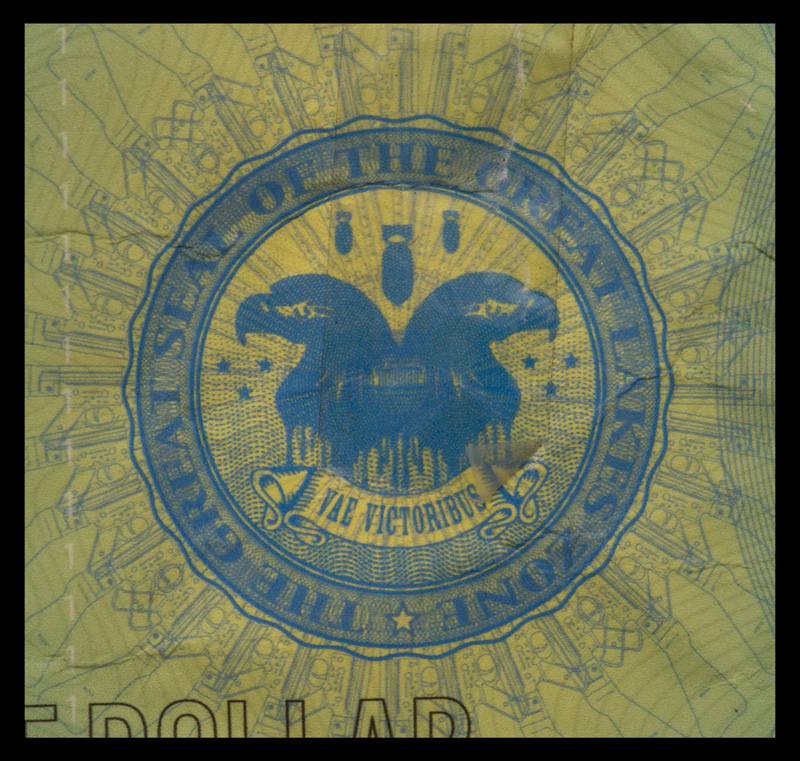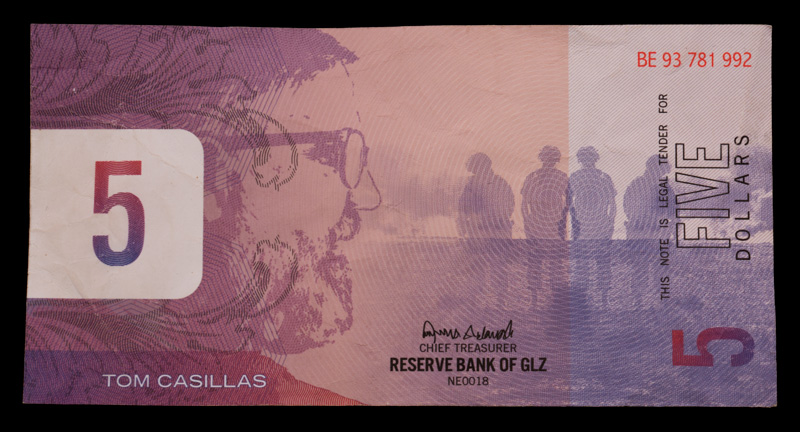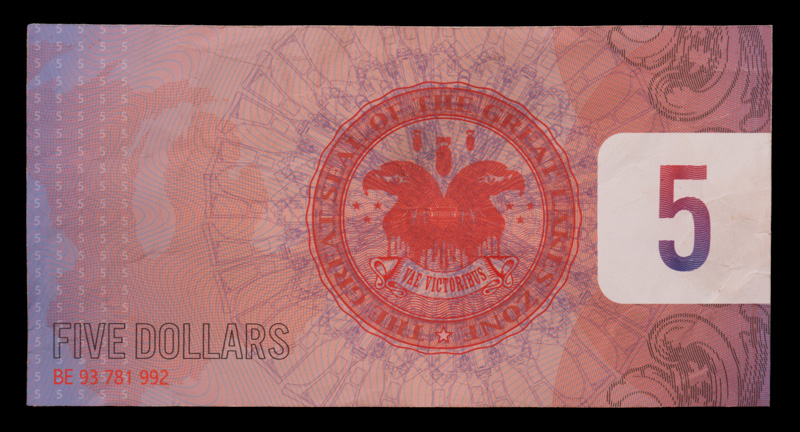$1 bill
3.38” x 2.44” (8.6 cm x 6.2 cm)
The design currency of the Great Lakes Zone follows a system not unlike that of the European Union, with size and color varying with each denomination. As with the European Union’s system, the bills grow larger as denominations increase.

